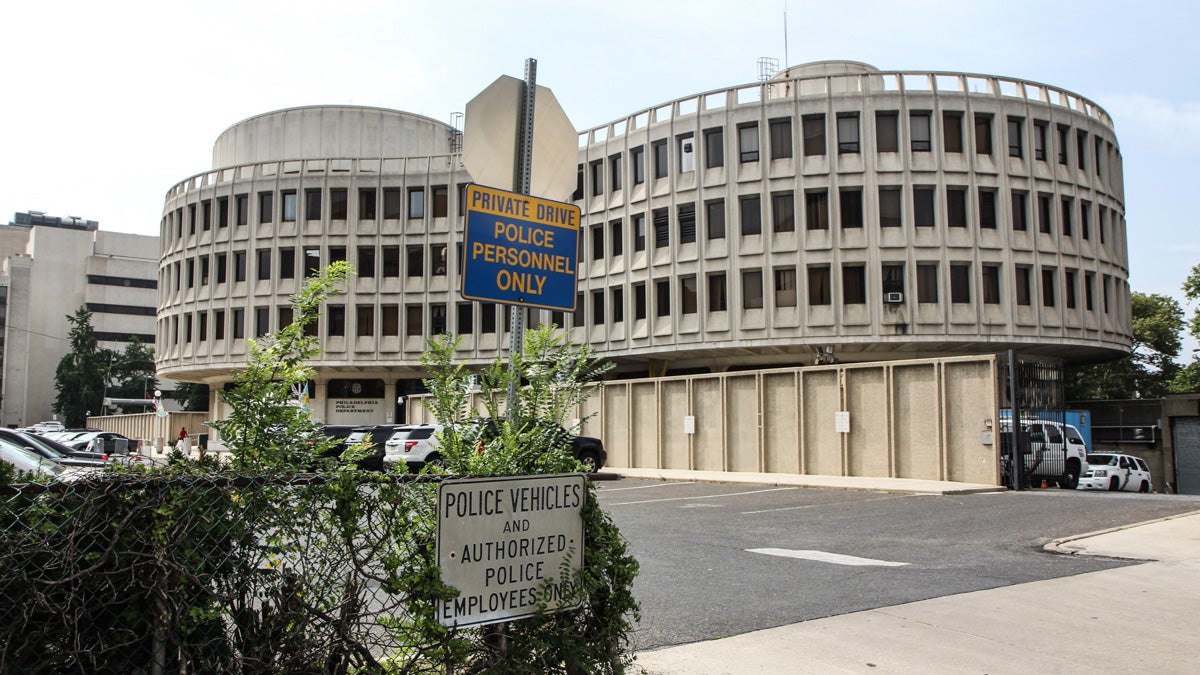Philly police department now shining stronger light on ‘flash’ tips
Listen
(Kimberly Paynter / WHYY)
When urgent calls fly across police radios, the information isn’t always complete.
Stoking further uncertainty is how these bits of “flash information” sometimes come from anonymous callers. Consequently, the Philadelphia Police Department leadership and the courts have been reviewing how far police officers should take these tips.
Recently, the department quietly clarified exactly how anonymous dispatch calls are to be handled, setting a strict new policy that officials say should go a long way in ratcheting down the number of those who are illegally stopped and frisked in Philadelphia.
In an email sent by Mayor Jim Kenney spokeswoman Lauren Hitt to consultant Mustafa Rashed obtained through a Right-to-Know request, Hitt outlined several policy reforms the city has taken in the face of the fact that more than a third of pedestrian stops and pat-downs are conducted without reasonable suspicion.
Those changes include additional layers of stop-and-frisk reviews by supervisors; district captains being able to look at pedestrian stops in real time; expanding the incident reports to include more information about why a stop was conducted; and regulating the use of flash information.
“Flash information is only sufficient cause to detain individuals if it comes from a reliable source — anonymous reports are not enough. However, anonymous flash information is still transmitted over radio,” Hitt wrote in the email.
Now, dispatchers must transmit anonymous information with the disclaimer that it’s “not verified,” as opposed to “verified” tips, where the 911 caller is willing to be identified.
The hope is, with fewer people being stopped based on anonymous tips, the percentage of illegal stops will also drop.
DV.load(“https://www.documentcloud.org/documents/2993246-FLASHINFOHITT.js”, {
width: 600,
height: 600,
sidebar: false,
text: false,
container: “#DV-viewer-2993246-FLASHINFOHITT”
});
Hard-line policy in place
Patrol offers have been warned about the limits of flash information in the past, though department officials confirm that the new rules are now set in stone.
When an officer is approaching a crime scene based on an anonymous tip, having a dispatcher remind cops that the information is “unverified” should help frame the situation differently, said Capt. Francis Healy, legal adviser to Commissioner Richard Ross.
“What they need to do, on scene, is basically identify additional factors and circumstances that would give them the reasonable suspicion. It doesn’t say that they ignore the call, or anything along those lines. But what it does mean is that they have to do a little more work,” Healy said.
Civil right attorney David Rudovsky said part of the reason that one third of all pedestrian stops police make in the city have been found unconstitutional is that officers sometimes abuse flash information, making stops and arrests based on a nameless tip.
“Unfortunately, for many years, the police department was not properly training its officers. They thought they could make a stop in this situation,” Rudovsky said.
Courts have long held that officers can’t make stops on anonymous tips alone. But they can use the anonymous info to stop someone if they can back it up. For instance, if a tipster says a guy in a red hat is selling drugs, and a cop sees a guy in a red hat making a suspicious exchange, then a stop can be made.
Healy said there is reason to be careful, because sometimes anonymous tips are used to exact retribution.
“Often times, they can be called in by competing drug dealers, to make sure we take care of their competition, so the information there needs to be confirmed,” he said.
Objections among rank and file
Adding the “verified” to the “flash” information doesn’t sit well all beat cops. None interviewed for this story would go on the record, but some said the policy shift might discourage police from exploring unverified tips at all, fearing that it would look bad on paper.
And, the fear is, when responding to a potential crime in progress, weighing verified tips versus unverified information could make them hold back.
Rudovsky is not persuaded by this. He said flash information is often too vague to be helpful.
“So, for example, if someone said there’s a young male on the 1600 block of Market at 2 o’clock in the afternoon, and he’s got a gun,” he said. “Well the officer goes to that location, and he’s gonna see 50 young males. That doesn’t give you right to stop every male.”
If the cop can underpin the anonymous tip with other clues, that might be enough to investigative someone, but the anonymous call alone can’t be grounds for arrest.
So why transmit anonymous information at all? Healy said many people do have legitimate crime tips to share but are too skittish to attach their name.
“I can empathize with individuals in certain parts of the city that are afraid to come forward and give their name,” Healy said. “We can’t police this city without our citizens. Even though they don’t want to give their names. We’ll go out there, and look, and find additional information if necessary, and do what we have to do.”
There are exceptions to the new policy. Police acting on anonymous tips about serious crimes — homicide, sexual assault and robbery — still have the ability to stop pretty much anyone in pursuit of suspects.
Rudovsky, one of the attorneys who sued the city in 2010 pushing for changes in how officers stop and frisk pedestrians, said the new rules around verified tips, along with a host of other changes, could prevent cops from making random — and illegal — stops or pat-downs.
But he warns that just because a stop or pat-down is legal doesn’t always mean it’s not targeting innocent people or racially discriminatory. In other words, cops can articulate a “reasonable suspicion” and still be wrong.
“The police are going to be ‘wrong’ most of the time,” he said. “They’re going to be stopping people for what turns out to be reasonable conduct. And, in fact, we look at the stops in Philadelphia, and 90 percent of them don’t result in a citation, or arrest, or any kind of actionable conduct by the police.”
A report from March showed nearly no improvement on how many stops and pat-downs are considered unconstitutional compared with the year-ago figures. However, the audit did find that things have gotten considerably better from when the court-ordered reforms began in 2011, when more than half of all stops and frisks in the city were conducted illegally.
The police department and Rudovsky are expected to be back in court to update a federal judge about the reforms in September.
WHYY is your source for fact-based, in-depth journalism and information. As a nonprofit organization, we rely on financial support from readers like you. Please give today.




